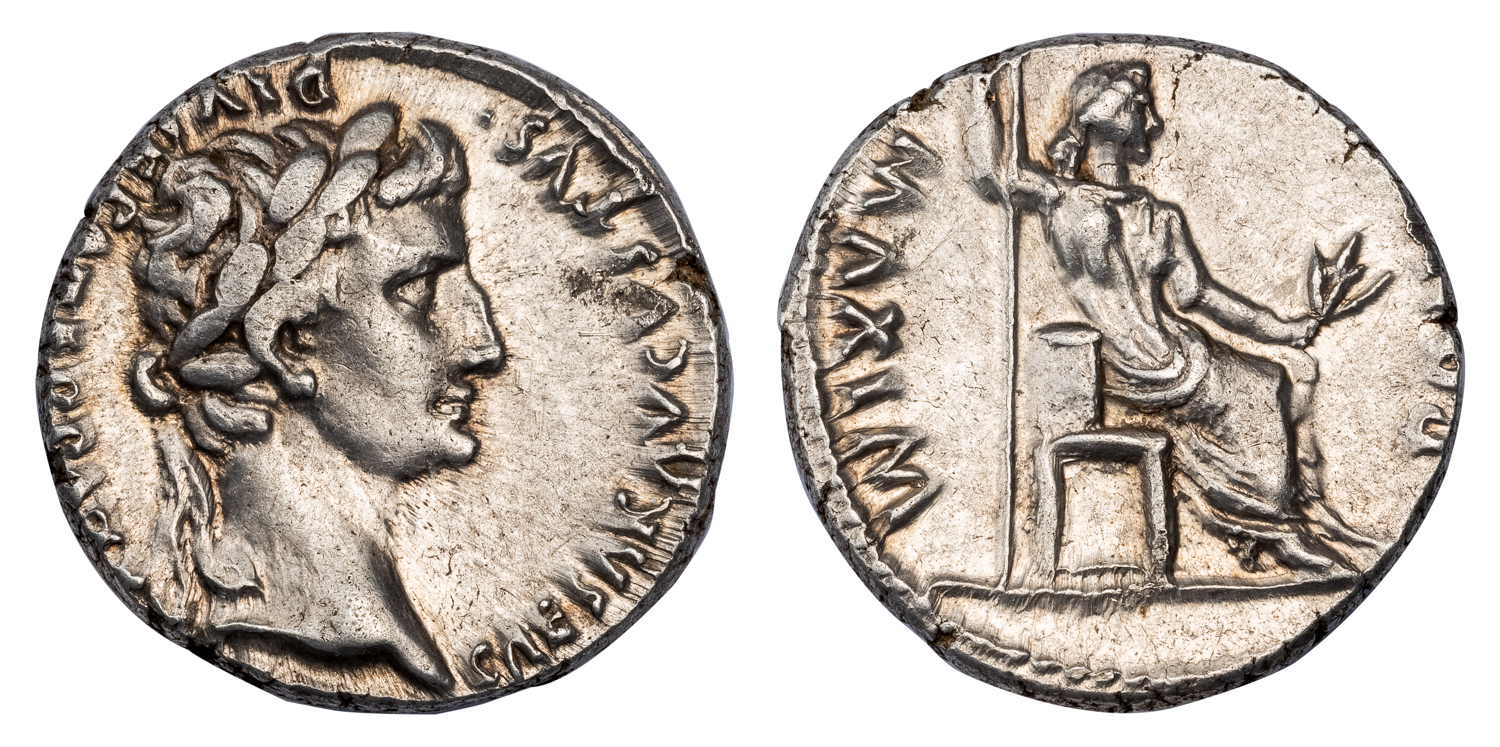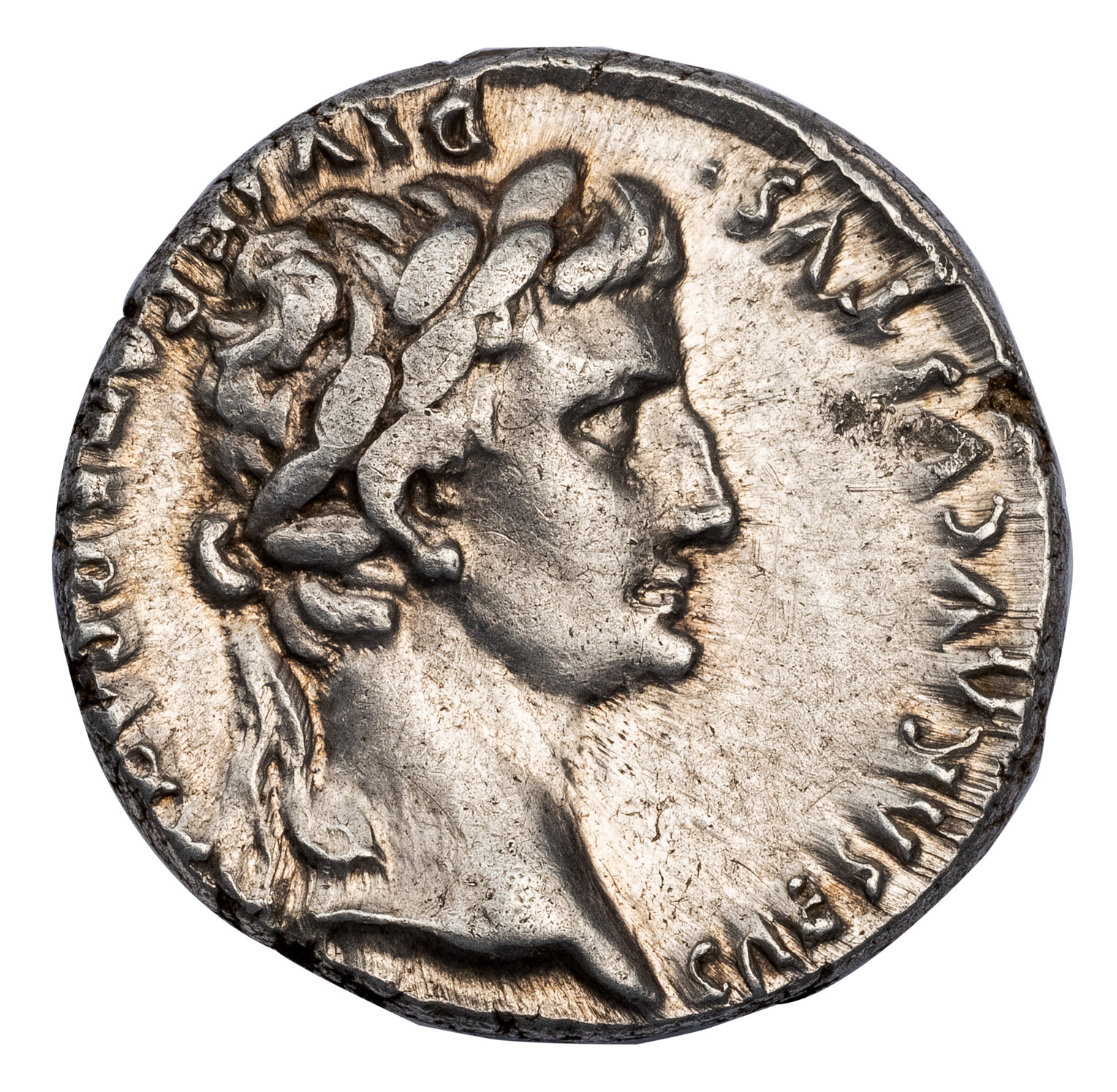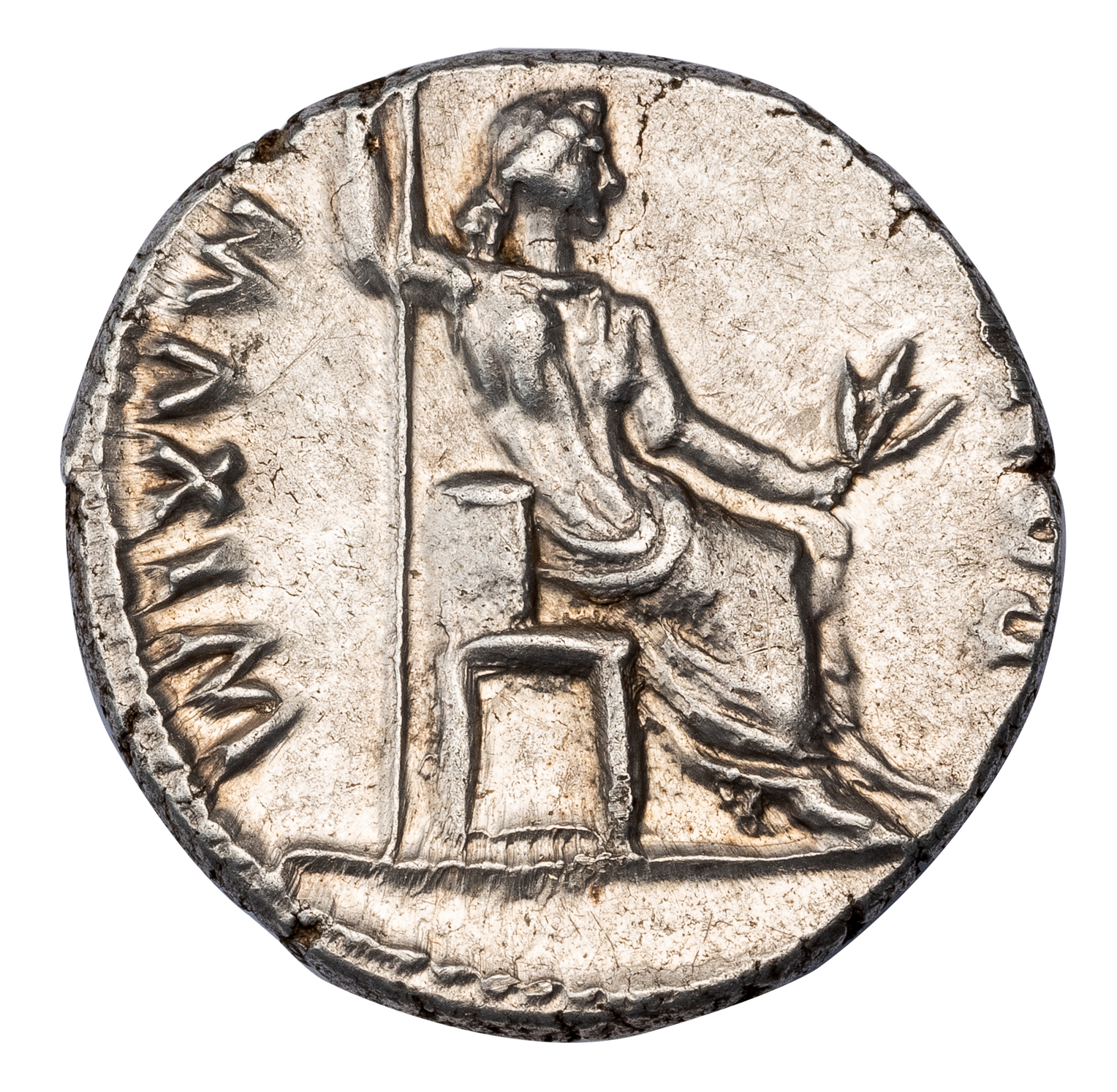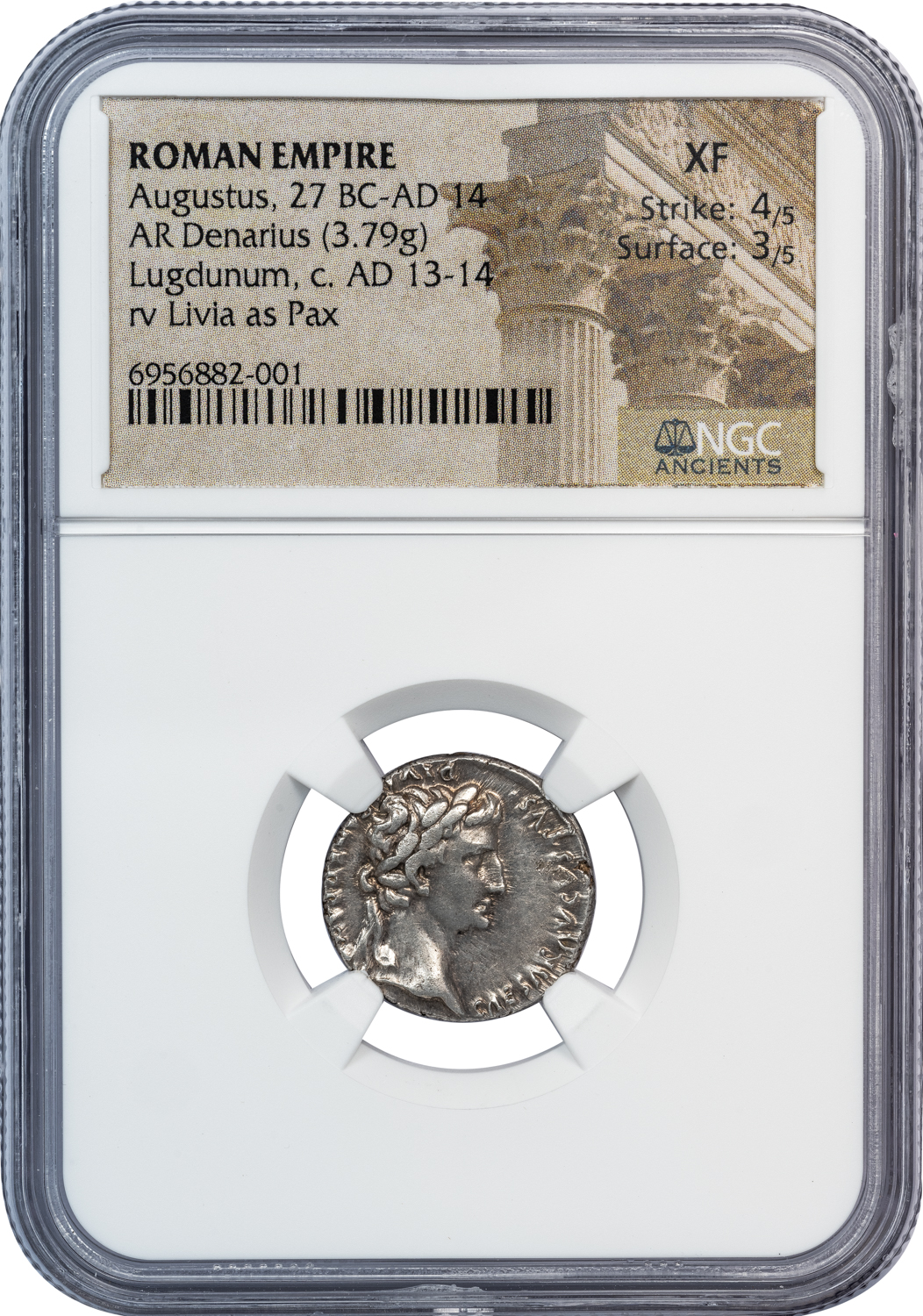AUGUSTUS SILVER DENARIUS – TRIBUTE PENNY TYPE WITH LIVIA – XF NGC GRADED ROMAN IMPERIAL COIN OF THE 12 CAESARS (Inv. 19655)
$1,500.00
19655. ROMAN EMPIRE. AUGUSTUS, 27 BC– AD 14.
Silver Denarius, 3.79 g, 18 mm. Issue of Lugdunum (Lyon).
Obv. CAESAR AVGVSTVS DIVI F PATER PATRIAE, laureate head of Augustus right. Rev. PONTIF MAXIM, female figure (Livia as Pax) enthroned right, holding scepter and olive branch.
RIC I rev, 220.
NGC graded XF, Strike 4/5, Surface 3/5.
It is a rare treat to present together these two denarii featuring the same depiction of Livia in the guise of Pax on the reverse. The first was struck by Augustus in the last years of his reign and the second by Tiberius throughout his reign as the successor to Augustus. Both may perhaps reflect the strong influence that Livia had on both emperors. She was characterized by Tacitus as having “the aged Augustus firmly under control” and was well known for the power that she exercised in Rome in her own right, much to the dismay of her son as reigning emperor.
Under Tiberius, this coin type has gained fame among numismatists for its probable involvement in the New Testament account of Jesus being questioned by the Pharisees and Herodians about the legitimacy of paying taxes to Rome. Although their intention was to get him to speak against the Romans and thereby obtain an excuse for his arrest, Matthew 22:19–21 reports that he responded to his questioners by saying, “‘Show Me the coin used for the poll–tax.’ And they brought Him a denarius. And He said to them, ‘Whose likeness and inscription is this?’ They said to Him, ‘Caesar’s.’ Then He said to them, ‘Then render to Caesar the things that are Caesar’s; and to God the things that are God’s.’ And hearing this, they were amazed, and leaving Him, they went away.”
The Tiberius denarius type is frequently described by numismatists as the “Tribute Penny” type because in the influential King James Version of the story in Matthew (paralleled also in Mark 12:13–17 and Luke 20:20–26) the Greek word denarion (= Latin denarius) is rendered as “penny” in English. This translation was made in order to make the ancient denarius comprehensible to English people of the seventeenth century. It was not entirely inappropriate considering that the early modern English penny actually evolved from the medieval denier, which had in turn developed from the Roman denarius.




